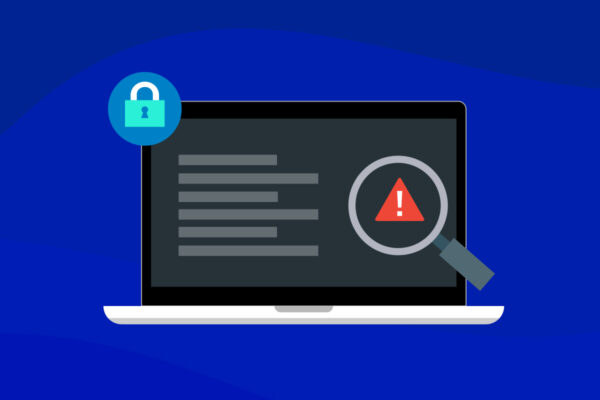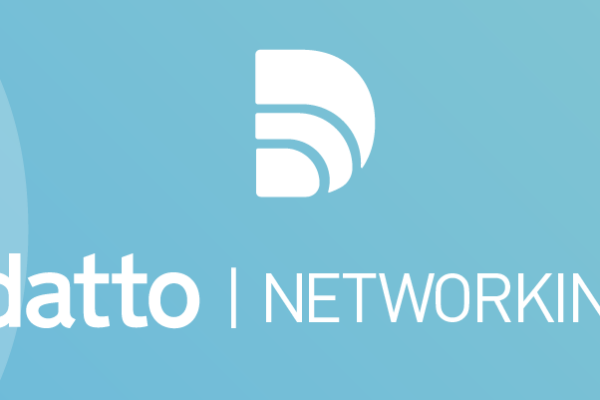What Is Web Filtering?
With cyberthreats on the rise, navigating the internet safely and efficiently has become paramount for businesses worldwide. Web filtering, a technology that has evolved significantly over the years, plays a crucial role in this navigation. In this blog post, we’ll delve into what web filtering is and its significance in today’s cybersecurity landscape. We will also explore how Datto Secure Edge can enhance your organization’s or your clients’ web security protocols. Discover how to leverage web filtering to protect, optimize and streamline your and your clients’ online activities.
What is web filtering?
Web filtering is a technology that allows organizations to control the content accessible on their networks. By setting predefined criteria, web filters block or allow access to specific websites or content, ensuring employees navigate the internet safely and productively.
Why is web filtering important?
Web filtering is an indispensable tool for organizations striving to maintain a secure, productive and compliant digital workspace. In today’s interconnected world, the internet is both a vast resource and a potential gateway for cybersecurity threats such as malware, ransomware and phishing attacks. Web filtering serves as a proactive defense mechanism, blocking access to harmful or unauthorized content before it can compromise network security.
Beyond enhancing security, web filtering boosts productivity by minimizing distractions and ensuring employees focus on relevant online resources. It also plays a crucial role in bandwidth management, prioritizing critical business operations by restricting access to bandwidth-heavy sites that are not work-related. Furthermore, for organizations subject to regulatory compliance, web filtering helps enforce policies that comply with legal standards and industry regulations, protecting sensitive data and avoiding potential legal ramifications.
By implementing web filtering, organizations can create a safer, more efficient and regulation-compliant internet environment, which is essential for sustaining business integrity and fostering a positive corporate culture.
How does web filtering work?
Web filtering is a nuanced process that employs several key technologies to scrutinize and manage the flow of online content within an organization. Let’s look at some key technologies that web filtering employs in tandem to create a secure and productive online environment.
Uniform resource locator (URL) categorization
Uniform resource locator (URL) categorization is the foundation of web filtering, and it helps classify websites into distinct categories, such as educational, entertainment, adult content and social media. This method allows administrators to easily block or allow entire categories of content based on their relevance and appropriateness to the work environment. By maintaining a database of categorized websites, web filters can quickly apply broad policy rules across similar types of web content.
Content analysis
Content analysis takes web filtering a step further by examining the actual content of web pages in real time. Unlike URL categorization, which relies on pre-existing databases, content analysis assesses the text, images and other elements on a page to detect malicious content like malware or inappropriate material that does not meet the organization’s policy standards. This dynamic approach ensures that even new or previously uncategorized websites can be accurately assessed for risks or policy violations.
Filtering based on predefined policies
Filtering based on predefined policies helps organizations set customized criteria to filter content. Policies may include rules about accessing social media during work hours, prohibiting certain categories of websites or allowing specific sites that are essential for business operations. This layer of web filtering allows for customization and flexibility, ensuring that the filter aligns with the unique needs and goals of each organization.
Together, these technologies form a comprehensive web filtering system that safeguards an organization’s network from security threats and ensures compliance with internal policies. Through this integrated approach, web filtering effectively maintains a balance between security, productivity and access to necessary online resources.
What are the different types of web filtering?
Web filtering encompasses various strategies to manage and secure internet usage within an organization. Let’s look at the three main categories of web filtering, which offer distinct approaches to controlling access to online content.
URL filtering
URL Filtering is a technique that blocks or allows access to websites based on their URLs. As discussed under URL categorization, this form of filtering categorizes websites into groups such as social networking, entertainment, adult content and more. Organizations can apply policies to permit or restrict access to entire categories, streamlining the management of web access.
Content filtering
Leveraging content analysis, content filtering evaluates texts, images, videos and other media on a webpage to identify and block harmful or inappropriate material. Content filtering is adaptive and capable of catching new threats or objectionable content that URL Filtering might miss. It’s especially useful for organizations looking to enforce detailed policies on web content since it can block specific pages or elements within a site rather than the entire website.
Application filtering
Application filtering extends beyond traditional web pages to manage the use of web-based applications and services. This category targets specific applications — like instant messaging platforms, email clients and cloud storage services — regulating access based on the application type rather than web content. It’s particularly relevant in today’s work environments, where cloud services and online tools play a crucial role in daily operations. Application filtering allows organizations to block or allow usage based on the application’s relevance to work, enhancing both security and productivity by preventing the use of unauthorized or distracting apps.
What are the benefits of web filtering?
Web filtering offers a multitude of benefits that extend beyond mere internet security, enhancing overall organizational efficiency and compliance. Below, we explore the key benefits of implementing web filtering within an organization.
- Enhanced security: Web filtering significantly reduces the risk of cyberthreats such as malware, ransomware and phishing attacks by blocking access to malicious sites and content, thus protecting sensitive company data and infrastructure.
- Increased productivity: By restricting access to non-work-related sites and distractions, web filtering helps employees maintain focus on their tasks, leading to improved efficiency and output throughout the organization.
- Bandwidth management: Web filtering optimizes network performance by limiting access to high-bandwidth sites not related to business operations, ensuring critical applications receive the bandwidth they require for optimal functionality.
- Compliance: For organizations subject to regulatory standards, web filtering enforces internet usage policies that comply with legal and industry regulations, helping avoid fines and legal issues while protecting reputation.
As a whole, implementing web filtering brings about a safer, more controlled and efficient digital environment, which is crucial for the modern workplace’s success and security posture.
Web filtering in bring-your-own-device (BYOD) environments
In the era of bring-your-own-device (BYOD) policies, web filtering plays a pivotal role in extending organizational security protocols to employees’ personal devices. This practice is crucial as it ensures that the same level of internet safety and compliance is maintained, regardless of the device used to access the corporate network.
Web filtering in BYOD environments helps mitigate the increased risk of data breaches and cyberthreats by enforcing consistent internet usage policies across all devices. It allows organizations to safeguard sensitive information and maintain high productivity levels while also respecting the flexibility that comes with the BYOD culture.
What are the challenges and considerations in web filtering?
Implementing web filtering, while essential for organizational security and efficiency, presents its own set of challenges that require careful consideration. Striking the right balance between stringent security measures and a positive user experience is crucial. Below, we explore common hurdles associated with web filtering and the considerations needed to navigate them effectively.
- False positives: False positives occur when legitimate websites are mistakenly blocked, potentially hindering employee productivity and access to necessary information. This underscores the importance of fine-tuning filtering algorithms to minimize errors.
- Potential impact on user experience: Overly restrictive web filtering can lead to frustration and decreased morale among employees. Organizations must ensure that web filtering policies are not only effective in mitigating risks but also reasonable enough to not adversely affect the daily workflow.
- Need for regular updates: The digital threat landscape is constantly evolving, requiring web filtering solutions to be regularly updated to recognize and block new threats. This necessitates a proactive approach to maintaining and updating filtering criteria to keep pace with emerging security challenges.
What are best practices for implementing web filtering?
Implementing web filtering effectively demands adherence to a set of best practices that enhance its efficacy and alignment with the organization’s evolving needs. Some of them are:
- Regular policy reviews: Frequent review of web filtering policies ensures they remain relevant and effective in addressing internet usage trends and organizational requirements, fostering an adaptive security posture.
- User education: Educating users about the rationale behind web filtering policies and safe internet practices empowers them to recognize potential threats, contributing to a culture of security awareness within the organization.
- Integration with other cybersecurity measures: Web filtering should be part of a comprehensive security strategy, working in concert with other cybersecurity measures to provide a layered defense against online threats.
- Adapting policies based on emerging threats: The digital threat landscape is continuously evolving. Adapting web filtering policies in response to new threats ensures the organization remains protected against the latest cyber-risks.
Take web access and filtering to the next level with Datto Secure Edge
Web filtering is a critical component in an organization’s cybersecurity strategy, crucial for safeguarding against online threats and ensuring a productive work environment. It allows businesses to control access to internet content, protecting the network from malware, phishing and other cyberthreats while ensuring compliance with regulatory standards.
Enter Datto Secure Edge, a solution that transcends traditional web filtering by providing a comprehensive security framework designed to offer secure, seamless access for employees, regardless of their location. Datto Secure Edge is equipped with advanced features such as threat protection, content filtering and secure web gateway services, which are integrated into a user-friendly platform. This ensures not only a safer internet experience but also enhanced network performance and reduced complexity in managing security protocols.
Organizations also benefit from Datto Secure Edge’s ability to dynamically adapt to the ever-changing cyberthreat landscape, ensuring robust protection tailored to their specific needs. For a deeper dive into how Datto Secure Edge can transform your organization’s or clients’ approach to web security, get a demo today.
Final thoughts
Web filtering is indispensable for protecting organizations from a myriad of online threats and ensuring the internet remains a productive resource for employees. However, the scope of digital security extends beyond just web filtering. Comprehensive web and network security is essential for defending against sophisticated cyberthreats, maintaining data integrity and ensuring seamless operational continuity.
Datto’s comprehensive networking suite offers just that — a robust array of solutions tailored to meet the diverse networking and security needs of organizations. From advanced web filtering to complete network management and protection, Datto provides all the tools necessary to secure your or your client’s digital environment against the evolving threat landscape. Discover more about Datto’s comprehensive networking suite.



